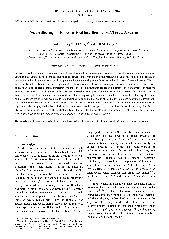摘要
Needle insertion is a common surgical procedure used in diagnosis and treatment. The needle steering technologies make continuous developments in theoretical and practical aspects along with the in-depth research on needle insertion. It is necessary to summarize and analyze the existing results to promote the future development of theories and applications of needle insertion. Thus, a survey of the state of the art of research is presented on algorithms of needle steering techniques, the surgical robots and devices. Based on the analysis of the needle insertion procedure, the concept of needle steering is defined as a kinematics problem, which is to place the needle at the target and avoid the obstacles. The needle steering techniques, including the artificial potential field method and the nonholonomic model, are introduced to control the needles for improving the accuracy. Based on the quasi-static thinking, the virtual spring model and the cantilever-beam model are developed to calculate the amount of needle deflection and generate the needle path. The phantoms instead of the real tissue are used to verify the models mentioned in most of the experimentations. For the desired needle trajectories, the image-guided robotic devices and some novel needles are presented to achieve the needle steering. Finally, the challenges are provided involving the controllability of the long flexible needle and the properties of soft tissue. The results and investigations can be used for further study on the precision and accuracy of needle insertion.
